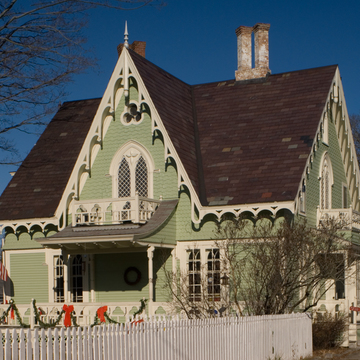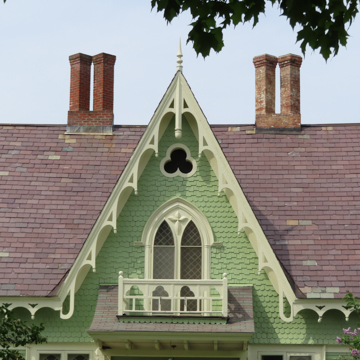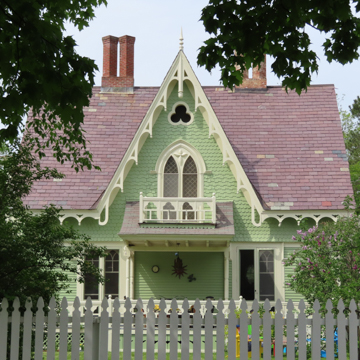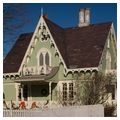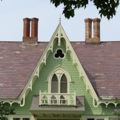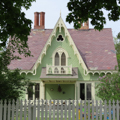This is perhaps Vermont's most elaborate extant Carpenter Gothic cottage. It was built for widow Sarah Hubbard Townsend on a portion of the family property just east of the house she had shared with her husband, Isaac. The cottage has a steep front gable overlooking Court Square, flanked by pairs of fashionable diagonally set chimneys. On the first floor, twin French doors originally opened onto an unroofed piazza, while in the gable, above a blind central bay, paired lancet windows beneath an attic trefoil opened on a bracket-supported balcony. There is a similar window and balcony centered on the Court Street side, which originally may have marked the gable-end entrance. The house was animated by scroll-sawn bargeboards with drop motifs and pendants that wrapped eaves as well as gables, drip moldings that framed diamond-glazed windows, union jack balcony railings matched by a similar fence around the yard, and a finial atop the gable toward the square. By the 1870s, a more severe polygonal bay window usurped the area beneath the Court Street balcony, perhaps added by newspaper publisher Lyman McIndoe. By the 1890s Lyman's daughter and son-in-law made further changes in a sympathetic Shingle Style. They replaced the gable clapboards with a zone of imbricated and butt-staggered wood shingles that terminate with a flare at the heads of the first-floor windows, centered shed-roofed porches on both main fronts, and created new trefoil-motif railings for balconies and piazzas.
You are here
Townsend-McIndoe House
If SAH Archipedia has been useful to you, please consider supporting it.
SAH Archipedia tells the story of the United States through its buildings, landscapes, and cities. This freely available resource empowers the public with authoritative knowledge that deepens their understanding and appreciation of the built environment. But the Society of Architectural Historians, which created SAH Archipedia with University of Virginia Press, needs your support to maintain the high-caliber research, writing, photography, cartography, editing, design, and programming that make SAH Archipedia a trusted online resource available to all who value the history of place, heritage tourism, and learning.









